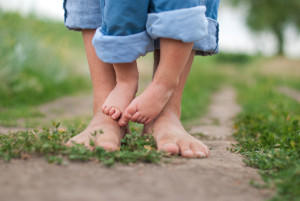Connect With Us
Items filtered by date: May 2025
Foot Development in Babies and Toddlers

Foot development in babies and toddlers follows a natural progression as they grow and begin to explore their environment. At birth, a baby’s feet are soft, flat, and mostly cartilage, with arches not yet fully formed. As babies start crawling and pulling up to stand, their feet strengthen and begin to take shape. During this stage, barefoot time is ideal for natural development and balance. When toddlers begin walking, soft-soled shoes that allow for flexibility and movement are recommended to protect the feet without restricting growth. As walking becomes more steady, supportive shoes with non-slip soles help provide stability. It is important to choose shoes that fit properly, offer enough room for the toes, and do not interfere with the natural growth and development of the feet. If you have concerns about your child’s foot development, it is suggested that you consult a podiatrist who can address any questions you may have.
The health of a child’s feet is vital to their overall well-being. If you have any questions regarding foot health, contact one of our podiatrists of Podiatry Health Center. Our doctors can provide the care you need to keep you pain-free and on your feet.
Tips for Keeping Children's Feet Healthy
- Make sure their shoes fit properly
- Look for any signs of in-toeing or out-toeing
- Check to see if they have Clubfoot (condition that affects your child’s foot and ankle, twisting the heel and toes inward) which is one of the most common nonmajor birth defects.
- Lightly cover your baby’s feet (Tight covers may keep your baby from moving their feet freely, and could prevent normal development)
- Allow your toddler to go shoeless (Shoes can be restricting for a young child’s foot)
- Cut toenails straight across to avoid ingrown toenails
- Keep your child’s foot clean and dry
- Cover cuts and scrapes. Wash any scratches with soap and water and cover them with a bandage until they’ve healed.
If you have any questions, please feel free to contact our office located in Dothan, AL . We offer the newest diagnostic and treatment technologies for all your foot care needs.
